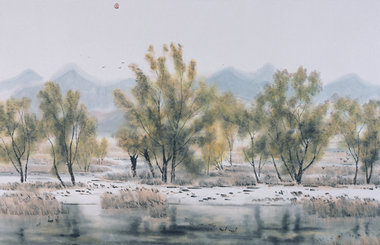The leading ladies of old Shanghai
By Zjang Kun in Shanghai ( China Daily ) Updated: 2016-04-09 07:27:32Eileen Chang (1920-1995)
She might have been an author instead of a film or music star but Chang was nevertheless a woman who enjoyed celebrity status in Shanghai as she frequently used the city as the setting in most of her acclaimed novels and essays. She remains highly popular and idolized today, primarily because of her personality and distinctive writing style.
Recognized as one of the most important Chinese writers in the 20th century, Chang is famous for her stories that dwell on the tensions between couples in love. Even though major changes took place in China's society and ideology in the early 20th century, Chang managed to focus her narrative on the mundane and everyday elements in life, and this subsequently earned her criticism for being oblivious to the political climate at that time.
Born to an aristocratic family in Shanghai, Chang's father was an opium addict while her mother was largely absent during the growing up years. But despite the lack of parental guidance, Chang turned out to be a child prodigy who excelled in Chinese and English.
In 1939, Chang had gained admission into the University of London on a full scholarship but was unable to attend because of the ongoing war. She ended up studying English literature in Hong Kong instead and in 1941 returned to Shanghai where her literary career took off.
Some of her most acclaimed works, such as Love in a Fallen City, The Golden Cangue and Lust, Caution were all created in the 1940s in Shanghai. Critics often said that her works reflected a literary maturity far beyond her age. While making sharp observations about humanity and the inevitable darkness of destiny, Chang had a distinctive writing style that often relied on vivid analogies, colorful descriptions and a narrative devoid of moral judgments.
In 1944, Chang was married to Hu Lancheng, a man who was 14 years her senior. She remained loyal to the man even though he was accused of collaborating with the Japanese invaders. But Chang ended the marriage when Hu's constant involvement with other women came to light. She migrated to Hong Kong and then to the United States in the 1950s. She continued with her writing in the US but never achieved much recognition there.
Chang was remarried in 1956, this time to American screenwriter Ferdinand Reyher. When Reyher died in 1967, Chang lived in seclusion till she was found dead by her landlord in her Los Angeles apartment in 1995.
Her most famous residence in Shanghai can be found at 195 Changde Road, Jing'an district.
|
|
|
|
|
|
|
|

























 Raymond Zhou:
Raymond Zhou: Pauline D Loh:
Pauline D Loh: Hot Pot
Hot Pot Eco China
Eco China China Dream
China Dream China Face
China Face






